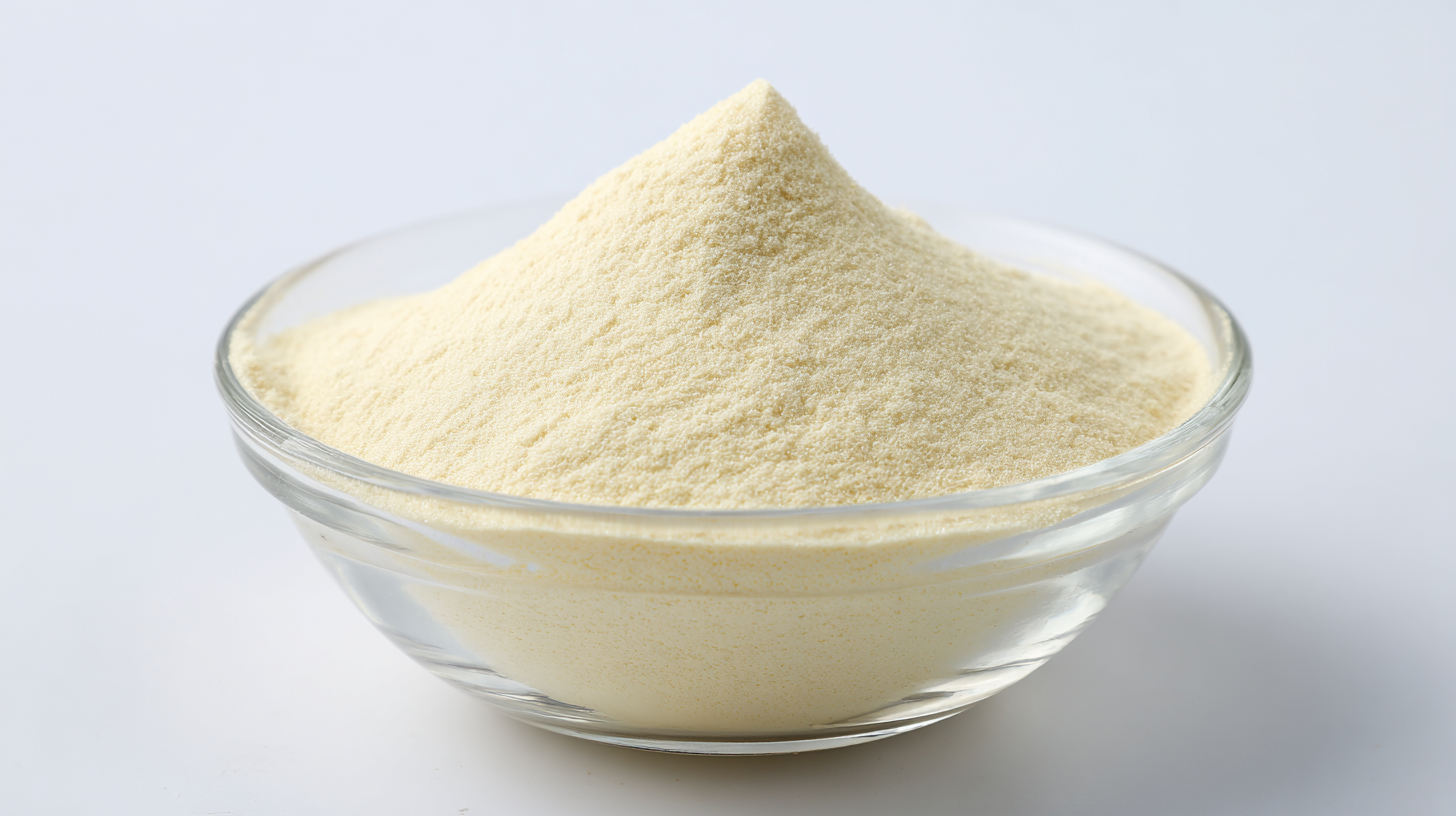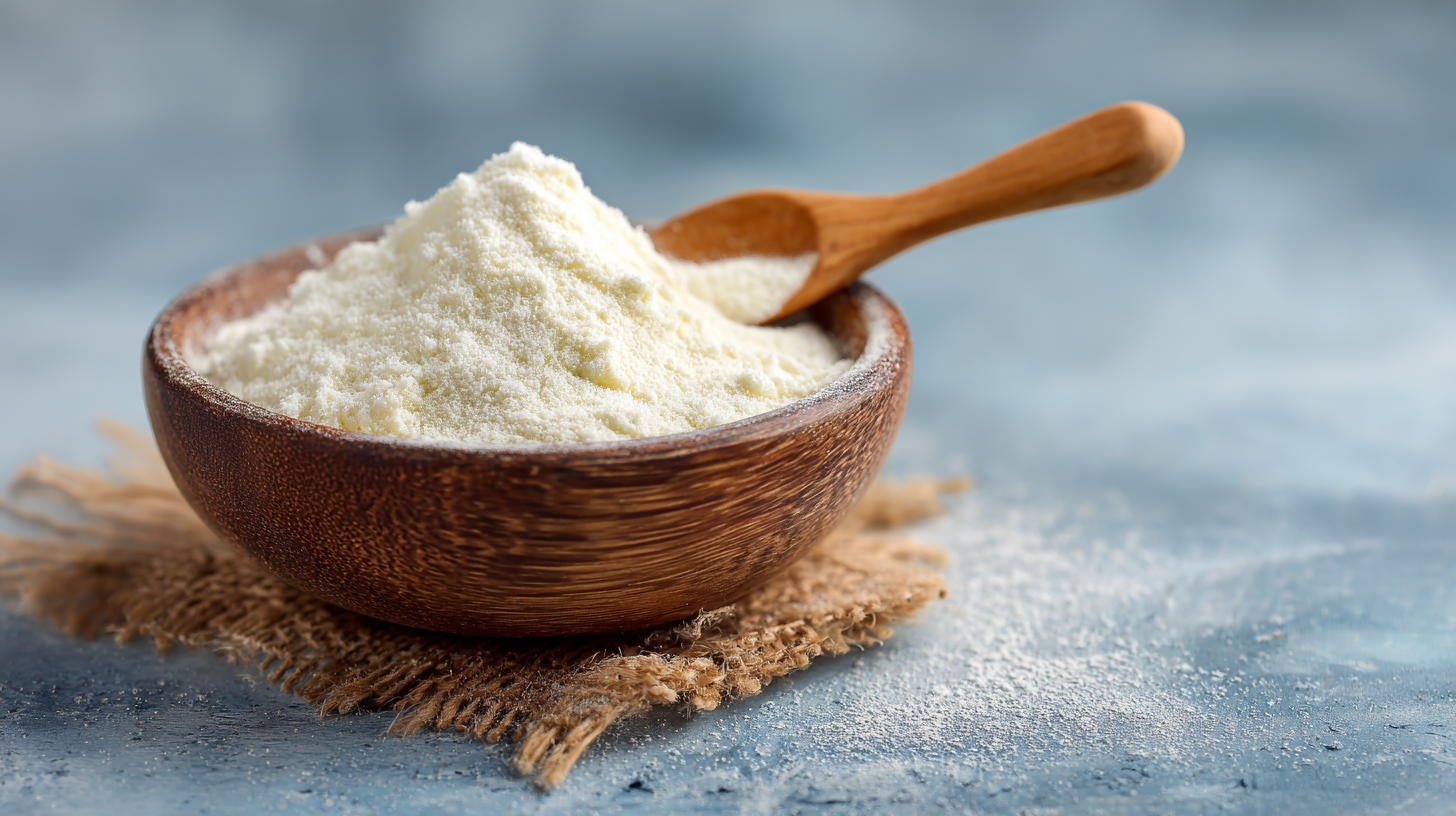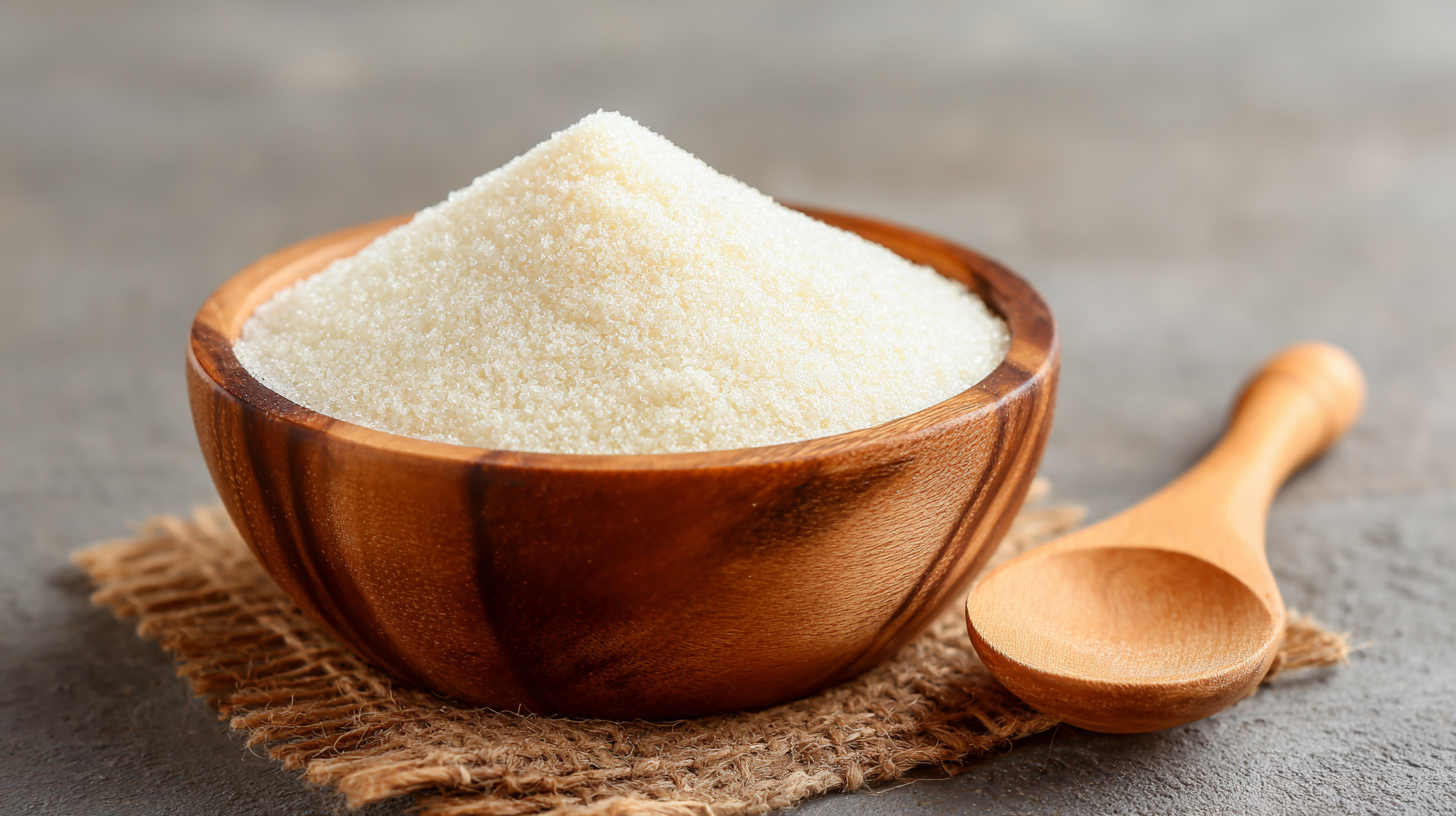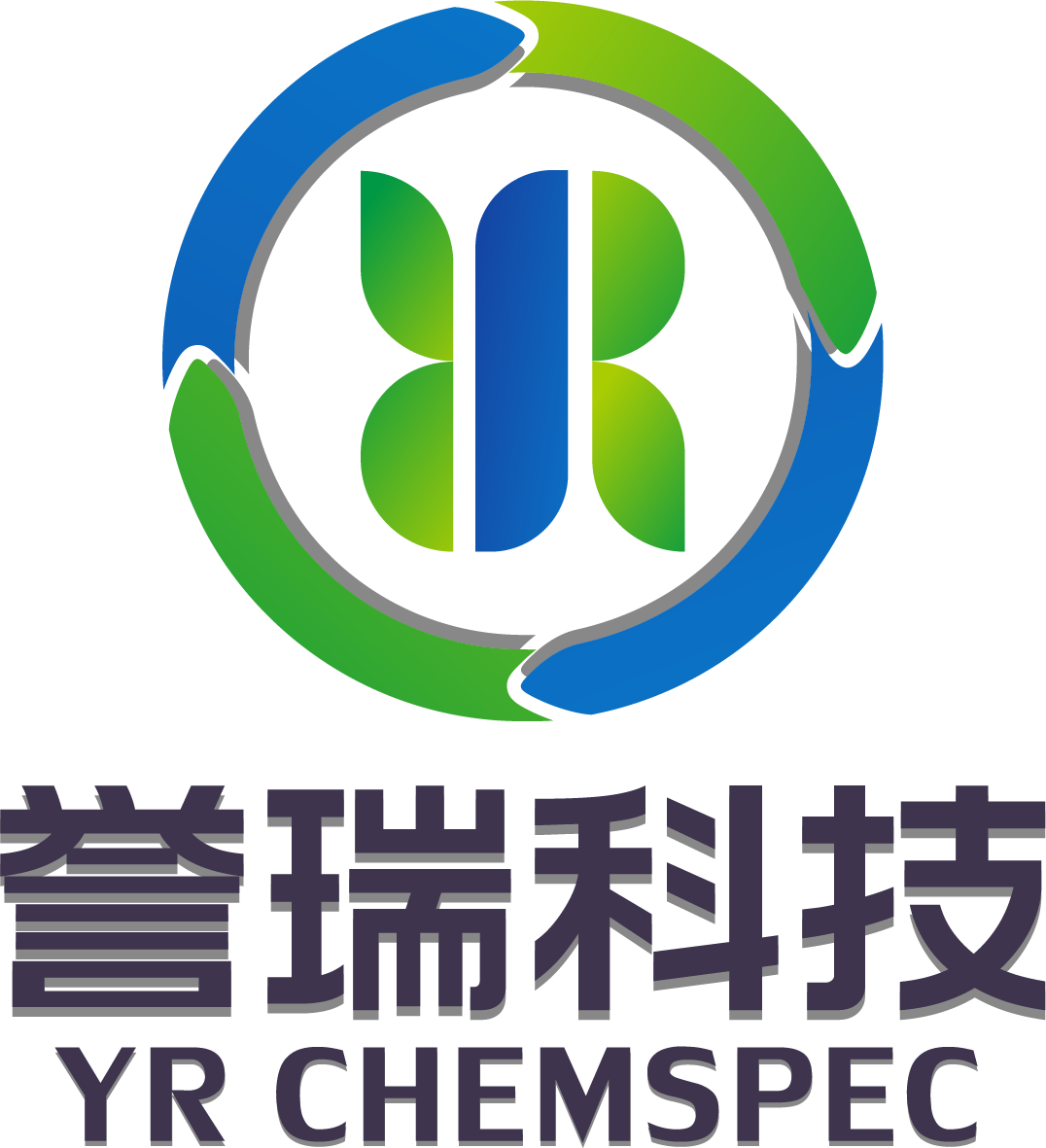In the ever-evolving landscape of food and cosmetic industries, the demand for high-quality ingredients is paramount, particularly for hydrocolloids such as Hydrolyzed Sclerotium Gum. According to a recent report by Grand View Research, the global hydrocolloids market is expected to reach USD 8.10 billion by 2025, driven by the increasing consumer preference for natural and clean-label products. As Hydrolyzed Sclerotium Gum offers exceptional thickening and stabilizing properties, its sourcing has become a pivotal challenge for businesses aiming to maintain product integrity and meet consumer expectations.

However, with the proliferation of suppliers and variations in quality, organizations must navigate these complexities to secure reliable sources of Hydrolyzed Sclerotium Gum that not only enhance product performance but also align with sustainability goals and regulatory compliance. This blog will explore the challenges faced in sourcing this critical ingredient and outline strategies for overcoming them.
Hydrolyzed sclerotium gum is gaining traction in various industries, particularly in food, cosmetics, and pharmaceuticals, due to its unique properties as a stabilizer and thickening agent. What sets a high-quality hydrolyzed sclerotium gum apart from its lower-grade counterparts is its source, production process, and molecular weight. Typically derived from the fermentation of fungi, the purity of the raw material directly impacts the final product's effectiveness and safety. A quality ingredient should have a high degree of solubility and consistency, ensuring it can easily integrate into formulations without compromising texture or performance.
Furthermore, the hydrolysis process is crucial in determining the functional attributes of the gum. The degree of hydrolysis affects the viscosity and gelling characteristics, making it vital for manufacturers to select suppliers who adhere to rigorous quality standards. Advanced testing methods should be employed to assess the gum’s rheological properties, ensuring that it meets the product requirements and regulatory compliance. As businesses increasingly prioritize clean labels and natural ingredients, understanding what constitutes a quality hydrolyzed sclerotium gum will not only enhance product offerings but also build consumer trust in the brand.
 Sourcing high-quality hydrolyzed sclerotium gum can be fraught with challenges, particularly when it comes to identifying reliable suppliers. With an increasing demand for this versatile ingredient in various industries, it is crucial to navigate the market carefully. The first step in securing a dependable supplier is to prioritize transparency. Always ask potential suppliers for their product specifications, sourcing practices, and quality control measures. This level of detail can help you gauge their commitment to delivering quality.
Sourcing high-quality hydrolyzed sclerotium gum can be fraught with challenges, particularly when it comes to identifying reliable suppliers. With an increasing demand for this versatile ingredient in various industries, it is crucial to navigate the market carefully. The first step in securing a dependable supplier is to prioritize transparency. Always ask potential suppliers for their product specifications, sourcing practices, and quality control measures. This level of detail can help you gauge their commitment to delivering quality.
Tip: Consider requesting samples before making a bulk purchase. This allows you to verify the product's quality and ensure it meets your specific requirements. Additionally, building long-term relationships with suppliers can foster communication and trust, making it easier to address potential issues before they escalate.
Furthermore, it's essential to perform background research on potential suppliers. Look for reviews and testimonials from other clients, as these can provide insight into their reliability and service quality. A supplier with a proven track record in delivering consistent and high-quality products is invaluable for your business's success.
Tip: Utilize industry networks and forums to gather recommendations for suppliers who specialize in hydrolyzed sclerotium gum. Engaging with other businesses can uncover hidden gems and help you avoid unreliable sources.
Ensuring consistency in hydrolyzed sclerotium gum is crucial for businesses looking to deliver high-quality products. Quality control measures should incorporate rigorous testing methods to assess factors such as viscosity, purity, and microbial contamination. According to a report by the Food and Drug Administration (FDA), the presence of impurities can lead to significant variations in texture and stability, which can directly impact consumer acceptance. Companies need to implement standardized procedures for batch testing to guarantee that every supply of hydrolyzed sclerotium gum meets these specifications.
In addition, sourcing from reputable suppliers who adhere to Good Manufacturing Practices (GMP) is essential. Research highlighted by the Institute of Food Technologists suggests that suppliers with robust quality management systems reduce the likelihood of material inconsistency. By establishing long-term partnerships with these suppliers, businesses can ensure a reliable source of hydrolyzed sclerotium gum that meets the required industry standards, thus enhancing product performance and customer satisfaction. Regular audits and feedback loops with suppliers can further solidify this quality assurance process, ultimately leading to a more stable supply chain.
This chart illustrates the consistency in sourcing high-quality hydrolyzed sclerotium gum over a series of months, highlighting the fluctuations in quality ratings based on quality control measures.
When sourcing high-quality hydrolyzed sclerotium gum for your business, striking the right balance between cost and quality is essential. Companies often find themselves at a crossroads: invest more for superior products or stick to a budget with lower quality options. The goal is to ensure that the final product meets customer expectations without breaking the bank.
To achieve this balance, it is crucial to thoroughly evaluate potential suppliers. Look for suppliers who can provide detailed documentation of their production processes and quality control measures. This ensures that the sclerotium gum not only meets your product standards but also aligns with your budget constraints.
Another strategic tip is to build long-term relationships with trusted suppliers. By negotiating long-term contracts, you might secure better pricing while maintaining quality. Additionally, consider small test batches before large-scale orders. This helps to assess the quality without committing your entire budget upfront, allowing you to make informed decisions based on performance and cost efficiency.
| Quality Standard | Cost per kg (USD) | Purity (%) | Supplier Rating (1-5) | Lead Time (Weeks) |
|---|---|---|---|---|
| Standard Quality | $20 | 85 | 3 | 2 |
| Premium Quality | $35 | 95 | 4.5 | 3 |
| Economy Quality | $15 | 80 | 2.5 | 4 |
| Organic Certified | $50 | 97 | 5 | 5 |
When sourcing high-quality hydrolyzed sclerotium gum, sustainability should be at the forefront of your decision-making process. Eco-friendly sourcing practices not only benefit the environment but also resonate positively with consumers who increasingly prioritize green products. As businesses strive to enhance their market reputation, adopting sustainable methods can lead to better customer loyalty and new market opportunities.
To incorporate eco-friendly practices, consider sourcing sclerotium gum from suppliers who prioritize responsible farming and production methods. Look for certification labels that indicate adherence to sustainable practices, such as organic or fair trade certifications. This will not only ensure quality but also align your sourcing strategy with the growing demand for transparency in supply chains.
Moreover, engaging with local suppliers can reduce your carbon footprint and support local economies. Building relationships with local producers helps foster a more sustainable supply chain and can provide your business with unique products that stand out in the marketplace. Regularly evaluating your suppliers' sustainability practices will also ensure that you are working with those committed to environmental stewardship.

